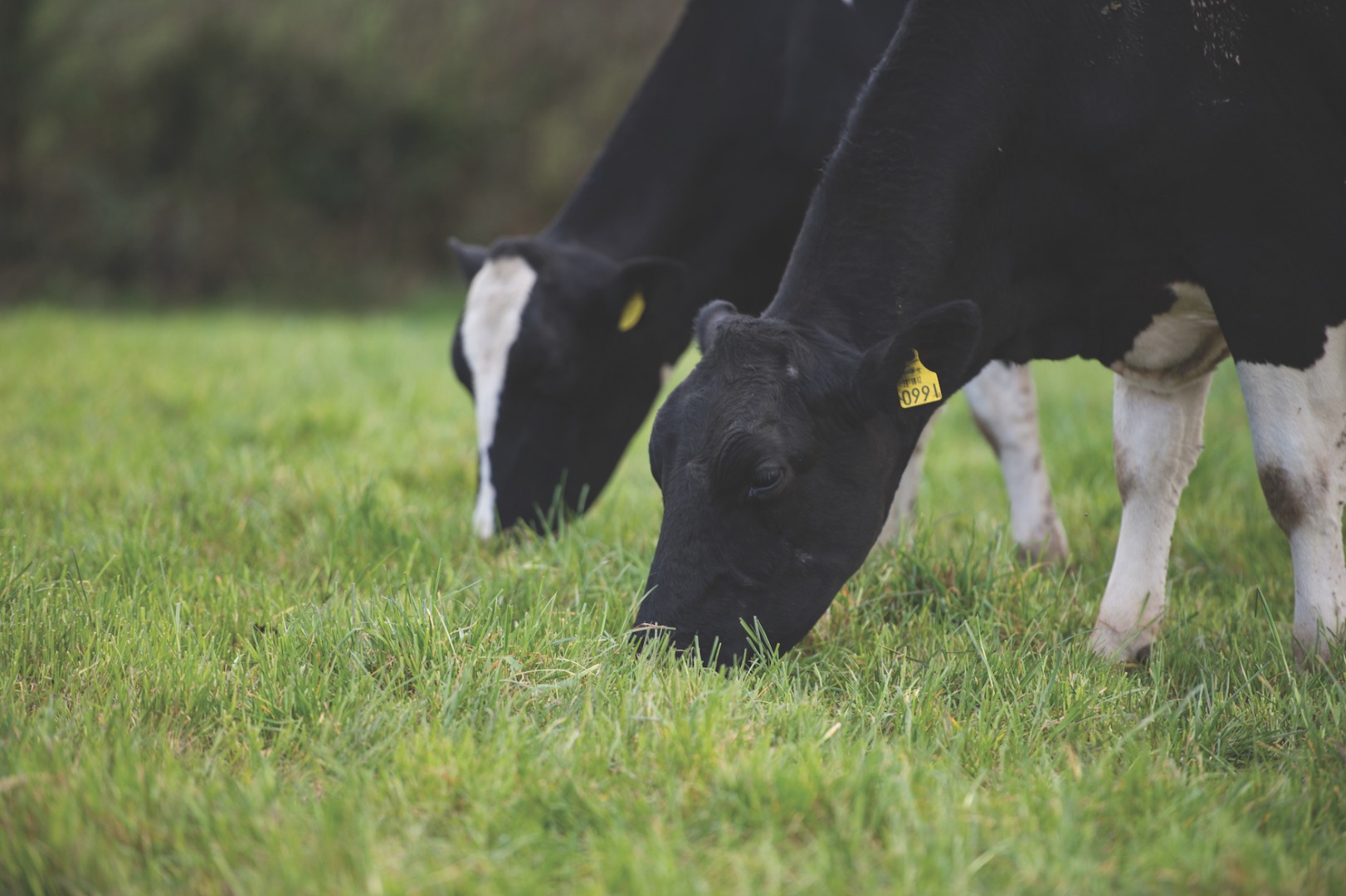A diverse population of micro-organisms dwell within the rumen of your cows, converting grass and other feeds into nutrients that cows can then use to maintain themselves, adequately support reproduction and produce milk and milk constituents. These microbes require a very specific balance of nutrients in order to work at their best and maximise feed efficiency of the cow. While grazed grass is an exceptional source of certain nutrients, it is lacking in others, and it is essential that the diet is balanced against what grass provides.
Below are eight simple tips to help your herd maximise the utilisation of grazed grass in their diet to support exceptional performance.
- Excess crude protein – Lush, leafy spring grass can often contain crude protein in excess of 250g/kg DM, particularly after fertiliser application, and this is mainly rumen degradable protein (RDP). Rumen microbes are unable to utilise this much protein especially if there is a shortage of fermentable energy available. In such cases excess RDP is broken down into ammonia in the rumen, absorbed into the blood stream and converted to urea in the liver, which can result in body condition score loss, reduced fertility and poor hoof health.
- Dry matter intakes – The moisture content of grass can vary significantly in spring, and this can have a major impact on DMI. At 15% DM, a cow needs to eat 100kg of fresh grass to consume 15kg of dry matter! Don’t overestimate the DMI a cow can take from grazing, or body condition, performance and fertility will be compromised
- Compound feeding – Compound feed should top up dry matter and other nutrients not supplied in grass and forage to meet energy requirements, optimise rumen fermentation and maximise performance. Aim for a feed that has around 14-16% CP, highly digestible fibre, a balanced source of cereals and a source of bypass protein. It should also contain minerals that grass is deficient in, with magnesium being particularly important. To maximise grass utilisation, calculate the amount of milk that can be provided by grass, relative to stocking rate, and provide compound feed to yield above this figure.
- Buffer feeding – It is important to supplement cows with highly digestible forages with a high energy content to maximise DMI. This is especially true in cases such as higher yielding herds that cannot meet DM requirements from grazed grass, low grass availability, highly stocked grazing platforms or prolonged periods of wet weather. Starch-based forages like maize silage are great to combine with grass, as this enhances nitrogen use in the rumen and increases microbial protein synthesis due to the fermentable energy supplied by the maize starch. High DMD grass silage (>28% DM) is also highly effective. This will help to maintain milk constituents and ensure sufficient DMI, which is especially critical in early lactation.
- Watch out for poor rumen function - Lush spring grass tends to have a high proportion of leaf to stem, resulting in low structural fibre levels or ‘scratch factor’ in the overall diet, and can be accompanied by high sugar levels. Together this can challenge rumen function, leading to acute or sub-acute rumen acidosis (SARA) and consequently compromising milk butterfat % and protein %, with prolonged challenges impacting fertility.
- Look for Cow Signals:
- Assess rumen fill 2-3 hours after milking to determine whether adequate grass has been allocated
- Monitor cudding rate – you are looking for more than 65% of the herd to be lying down chewing the cud 2-3 hours after milking;
- Check dung consistency – loose, bubbly dung with undigested fibre in it is indicative of poor rumen function, as is the presence of cud balls in collecting yards or cubicles;
- Monitor condition – cows losing excessive body condition can point to insufficient feed intake, a possible metabolic disorder, health issue or sub-optimal rumen function.
- Milk quality – Monitor bulk tank milk collections for average yields and constituents. A fall in butterfat or protein of 0.3% or greater in one week is a warning sign for poor rumen function and the occurrence of SARA. It is also useful to keep an eye on the butterfat to protein ratio to ensure this falls within the optimum range of around 1.2 : 1.
- Feed Actisaf live yeast – Adding Actisaf live yeast to your cows’ ration will reduce setbacks in performance at turnout by helping the rumen bugs adjust to grazed grass faster and more effectively, thereby improving rumen function. Actisaf also enhances feed efficiency, leading to increased milk solids and milk yield, and reduces the risk of SARA both at turnout and throughout the grazing period. It should be included at a rate of 1-2kg/tonne of grazing compound (assuming a feed rate of 2-8kg compound/cow/day).

